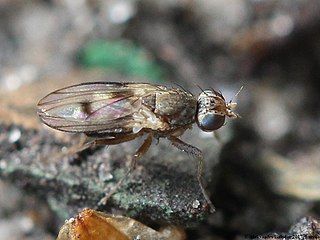
A lynx is any of the four species within the medium-sized wild cat genus Lynx. The name lynx originated in Middle English via Latin from the Greek word λύγξ, derived from the Indo-European root leuk- in reference to the luminescence of its reflective eyes.

An oak is a tree or shrub in the genus Quercus of the beech family, Fagaceae. There are approximately 500 extant species of oaks. The common name "oak" also appears in the names of species in related genera, notably Lithocarpus, as well as in those of unrelated species such as Grevillea robusta and the Casuarinaceae (she-oaks). The genus Quercus is native to the Northern Hemisphere, and includes deciduous and evergreen species extending from cool temperate to tropical latitudes in the Americas, Asia, Europe, and North Africa. North America has the largest number of oak species, with approximately 160 species in Mexico of which 109 are endemic and about 90 in the United States. The second greatest area of oak diversity is China, with approximately 100 species.

Crayfish are freshwater crustaceans belonging to the clade Astacidea, which also contains lobsters. In some locations, they are also known as crawfish, craydids, craybobs, crawdaddies, crawdads, freshwater lobsters, mountain lobsters, rock lobsters, mudbugs, baybugs or yabbies. Taxonomically, they are members of the superfamilies Astacoidea and Parastacoidea. They breathe through feather-like gills. Some species are found in brooks and streams, where fresh water is running, while others thrive in swamps, ditches, and paddy fields. Most crayfish cannot tolerate polluted water, although some species, such as Procambarus clarkii, are hardier. Crayfish feed on animals and plants, either living or decomposing, and detritus.

Starlings are small to medium-sized passerine birds in the family Sturnidae. The Sturnidae are named for the genus Sturnus, which in turn comes from the Latin word for starling, sturnus. Many Asian species, particularly the larger ones, are called mynas, and many African species are known as glossy starlings because of their iridescent plumage. Starlings are native to Europe, Asia, and Africa, as well as northern Australia and the islands of the tropical Pacific. Several European and Asian species have been introduced to these areas, as well as North America, Hawaii, and New Zealand, where they generally compete for habitats with native birds and are considered to be invasive species. The starling species familiar to most people in Europe and North America is the common starling, and throughout much of Asia and the Pacific, the common myna is indeed common.
The Cypriot mouse is a species of mouse endemic to Cyprus. Its primary habitat seems to be the vineyards and fields of the Troödos Mountains region.

Great Britain is an island in the North Atlantic Ocean off the northwest coast of continental Europe. With an area of 209,331 km2 (80,823 sq mi), it is the largest of the British Isles, the largest European island and the ninth-largest island in the world. It is dominated by a maritime climate with narrow temperature differences between seasons. The 60% smaller island of Ireland is to the west—these islands, along with over 1,000 smaller surrounding islands and named substantial rocks, form the British Isles archipelago.

Coccinellidae is a widespread family of small beetles ranging in size from 0.8 to 18 mm (0.03–0.7 in). They are commonly known as ladybugs in North America and ladybirds in Great Britain. Some entomologists prefer the names ladybird beetles or lady beetles as they are not true bugs. Many of the species have conspicuous aposematic colours and patterns, such as red with black spots, that warn potential predators that they are distasteful.
Trixoscelis similis is a European species of Heleomyzidae.

Trixoscelis is a genus of flies in the family Heleomyzidae. For the most part they are small to minute flies found in warm semi-arid conditions on sand dunes, dry grasslands or shrubby places. They are widely distributed in the Palaearctic.
Trixoscelis mendezabali is a European species of Heleomyzidae.
Trixoscelis lyneborgi, is a European species of Heleomyzidae.
Trixoscelis psammophila is a European species of Heleomyzidae.
Trixoscelis approximata is a European species of Heleomyzidae.
Trixoscelis pedestris is a European species of Heleomyzidae.
Trixoscelis canescens, is a European species of Heleomyzidae.
Trixoscelis vikhrevi is a European species of Heleomyzidae.

Trixoscelis obscurella is a European species of Heleomyzidae.

Trixoscelis marginella, is a European species of Heleomyzidae.
Trixoscelis deserta is a species of fly in the family Heleomyzidae.
Trixoscelis flavida is a species of fly in the family Heleomyzidae.







